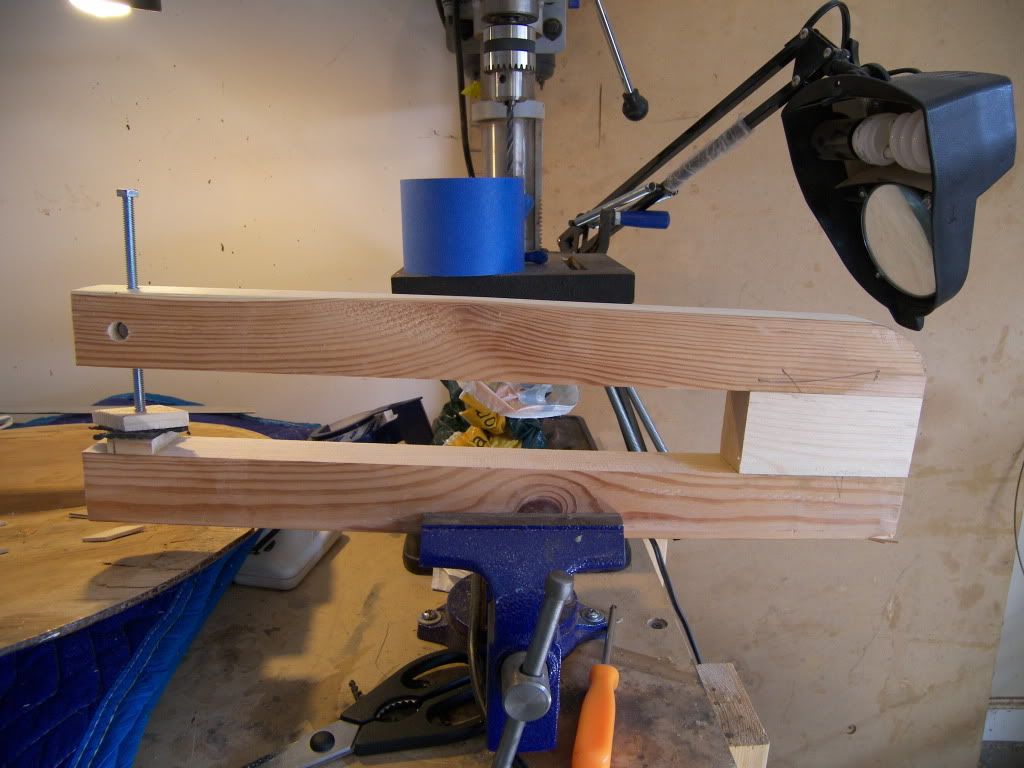
 |
|
|
|
#1
|
|||
|
|||
|
Good exchange, this weekend I made 4 deep c throat clamps… I am planning to build couple tools for the project, next will be a finger plane and then a caliper… not just to save some money but also I think is a good exercise… I will take some pictures soon
|
|
#2
|
|||
|
|||
|
Well Guys this is my plan:
1) For laying of the cleats: They are spaced about 2" in between, no more than 2 1/4", PS I didn't care for the proper grain orientation of the cleats at this point is only for placement. 2) Also this is where I am planning the sound post patch to go... I am not doing the SP patch just yet, I need to make a couples tools for this job and then I am planing to practice this procedure in a piece of scrap wood first...  I am seeking for advise before I and clue this up... I can really use a series of steps sequence or methodology, and don't forget tips...   The tool, it isnt fancy but it will get the job done...!!!   |
|
#3
|
||||
|
||||
|
Ruben it looks like you're on the right track to me.
As far as sequence goes I would repair the bottom block areas and do the sound post patch first, then the cleats last. My tip: I often use small bags of lead shot as weights to clamp the cleats ... it does as good a job as a clamp and much easier. |
|
#4
|
|||
|
|||
|
Quote:
|
|
#5
|
||||
|
||||
|
I think the cleats are insurance, not the main game. After fitting the post patch it's nice to be able to manoeuver a plane around that area without knocking into cleats. Same with the block repair. If all the cleats are fitted as laid out, it's going to be less fun trimming the block patch. I think.
Quote:
 |
|
#6
|
||||
|
||||
|
Quote:
The usual areas that sink are the lower Bassbar area, upper Bassbar area, center Bridge area and Soundpost area in that order from what I have seen. If just under the Bar at the bottom, it is possible that it was caused by a sprung-in Bar. The Bar itself when sprung in will not push out the Top in the center like some think because it is anchored against thinner graduated areas of the Top that are weaker. The sprung Bar will pull the top inwards at the ends and possibly split to top as well. I have had quite a few basses restored where the Top was partially or completely re-shaped so I have seen the process quite a few times. Last week I was up at Arnold's and saw the plaster mold outside behind the shop. I went to lift it and uhgggg, no way. It's a two man job. Arnold mentioned that each time he had to move the mold around with or without the Top in it he had his assistant help him move it. |
|
#7
|
|||
|
|||
|
Thank you for the feedback.... I got a question and this applies to SP patch and all...
I read that to get a good bounding you need to let the cleat sit on the top from one minute till the hide glue jell, and the using a hair dryer heat the glue again and then apply pressure to it... Or I should just apply pressure to the cleat as fast as I can and clamp with good pressure, not too much but firm.. Last edited by Ruben E garcia; 02-14-2011 at 02:17 PM. |
|
#8
|
|||
|
|||
|
Quote:
Well now seems like it’s a tough job… some people prefer to avoid to change the BB unless its 100% necessary… I can’t really tell if it need to be replace, because it’s too old or stiff… It does have a crack… that’s a bad sign… Now stupid question… can it be shorten a little and inlay patch the ends??? Or it will be an abomination of my sick mind???  |
 |
| Currently Active Users Viewing This Thread: 2 (0 members and 2 guests) | |
| Thread Tools | |
| Display Modes | |
|
|